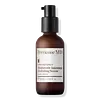What's inside
What's inside
 Key Ingredients
Key Ingredients

 Benefits
Benefits

 Concerns
Concerns

 Ingredients Side-by-side
Ingredients Side-by-side

Water
Skin ConditioningMandelic Acid
AntimicrobialGlycerin
HumectantIsopentyldiol
HumectantSqualane
EmollientPropanediol
SolventSodium Hyaluronate
HumectantAllantoin
Skin ConditioningMicrocitrus Australasica Fruit Extract
Aspergillus Ferment
Skin ConditioningSclerotium Gum
Emulsion StabilisingSodium Phytate
Sodium Polyacryloyldimethyl Taurate
Emulsion StabilisingHydroxyethyl Acrylate/Sodium Acryloyldimethyl Taurate Copolymer
Emulsion StabilisingC15-23 Alkane
SolventC13-14 Alkane
SolventBetaine
HumectantDecyl Glucoside
CleansingSodium Hydroxide
BufferingEthylhexylglycerin
Skin ConditioningPotassium Sorbate
PreservativeWater, Mandelic Acid, Glycerin, Isopentyldiol, Squalane, Propanediol, Sodium Hyaluronate, Allantoin, Microcitrus Australasica Fruit Extract, Aspergillus Ferment, Sclerotium Gum, Sodium Phytate, Sodium Polyacryloyldimethyl Taurate, Hydroxyethyl Acrylate/Sodium Acryloyldimethyl Taurate Copolymer, C15-23 Alkane, C13-14 Alkane, Betaine, Decyl Glucoside, Sodium Hydroxide, Ethylhexylglycerin, Potassium Sorbate
Water
Skin ConditioningDimethicone
EmollientButylene Glycol
HumectantNiacinamide
SmoothingAcetyl Glucosamine
Skin ConditioningSqualane
EmollientSodium Acrylate/Sodium Acryloyldimethyl Taurate Copolymer
Emulsion StabilisingPolysilicone-11
Cetearyl Olivate
Hdi/Trimethylol Hexyllactone Crosspolymer
Polyisobutene
Sorbitan Olivate
EmulsifyingDimethyl Isosorbide
SolventPolysorbate 20
Emulsifying1,2-Hexanediol
Skin ConditioningCaprylyl Glycol
EmollientDimethyl Mea
BufferingHydroxyacetophenone
AntioxidantCitric Acid
BufferingCeramide NP
Skin ConditioningCaprylyl/Capryl Glucoside
CleansingSorbitan Oleate
EmulsifyingSodium Gluconate
Skin ConditioningSpermidine
AntioxidantSilica
AbrasiveSodium Acetylated Hyaluronate
HumectantSodium Hyaluronate
HumectantPhenoxyethanol
PreservativePhytosphingosine
Skin ConditioningSodium Hyaluronate Crosspolymer
HumectantHyaluronic Acid
HumectantEthylhexylglycerin
Skin ConditioningAcetyl Tetrapeptide-11
Skin ConditioningAcetyl Tetrapeptide-9
Skin ConditioningGlycerin
HumectantDisodium Acetyl Glucosamine Phosphate
Skin ConditioningSodium Glucuronate
HumectantMagnesium Sulfate
Water, Dimethicone, Butylene Glycol, Niacinamide, Acetyl Glucosamine, Squalane, Sodium Acrylate/Sodium Acryloyldimethyl Taurate Copolymer, Polysilicone-11, Cetearyl Olivate, Hdi/Trimethylol Hexyllactone Crosspolymer, Polyisobutene, Sorbitan Olivate, Dimethyl Isosorbide, Polysorbate 20, 1,2-Hexanediol, Caprylyl Glycol, Dimethyl Mea, Hydroxyacetophenone, Citric Acid, Ceramide NP, Caprylyl/Capryl Glucoside, Sorbitan Oleate, Sodium Gluconate, Spermidine, Silica, Sodium Acetylated Hyaluronate, Sodium Hyaluronate, Phenoxyethanol, Phytosphingosine, Sodium Hyaluronate Crosspolymer, Hyaluronic Acid, Ethylhexylglycerin, Acetyl Tetrapeptide-11, Acetyl Tetrapeptide-9, Glycerin, Disodium Acetyl Glucosamine Phosphate, Sodium Glucuronate, Magnesium Sulfate
Ingredients Explained
These ingredients are found in both products.
Ingredients higher up in an ingredient list are typically present in a larger amount.
Ethylhexylglycerin (we can't pronounce this either) is commonly used as a preservative and skin softener. It is derived from glyceryl.
You might see Ethylhexylglycerin often paired with other preservatives such as phenoxyethanol. Ethylhexylglycerin has been found to increase the effectiveness of these other preservatives.
Glycerin is already naturally found in your skin. It helps moisturize and protect your skin.
A study from 2016 found glycerin to be more effective as a humectant than AHAs and hyaluronic acid.
As a humectant, it helps the skin stay hydrated by pulling moisture to your skin. The low molecular weight of glycerin allows it to pull moisture into the deeper layers of your skin.
Hydrated skin improves your skin barrier; Your skin barrier helps protect against irritants and bacteria.
Glycerin has also been found to have antimicrobial and antiviral properties. Due to these properties, glycerin is often used in wound and burn treatments.
In cosmetics, glycerin is usually derived from plants such as soybean or palm. However, it can also be sourced from animals, such as tallow or animal fat.
This ingredient is organic, colorless, odorless, and non-toxic.
Glycerin is the name for this ingredient in American English. British English uses Glycerol/Glycerine.
Learn more about GlycerinSodium Hyaluronate is hyaluronic acid's salt form. It is commonly derived from the sodium salt of hyaluronic acid.
Like hyaluronic acid, it is great at holding water and acts as a humectant. This makes it a great skin hydrating ingredient.
Sodium Hyaluronate is naturally occurring in our bodies and is mostly found in eye fluid and joints.
These are some other common types of Hyaluronic Acid:
Learn more about Sodium HyaluronateSqualane is an emollient that helps the skin hold onto moisture. It's an oily liquid that occurs naturally in certain types of fish and plant oils.
Because squalane boosts hydration in the skin, it also comes with plenty of benefits: it is an antioxidant and can help fight free radicals and skin damage. Squalane is also found to have a detoxifying effect when applied.
Squalane comes from squalene, which occurs naturally within the sebum of our skin. It is one of the oils our skin produces to keep itself hydrated. Squalane is the hydrogenated version of squalene and has a longer shelf life.
Research shows that squalane is non-irritating (even at 100% concentration).
In general, it's a fantastic ingredient. It does a great job at hydrating the skin, and it's suitable for those with sensitive skin.
The source of squalane may impact malassezia / fungal acne. This is because olive oil derived squalane can contain impurities such as fatty acids and plant waxes. Sugarcane derived squalane is recommended for anyone with malassezia concerns.
Is squalane vegan?
This depends on the source. Squalane can be derived from both plants and animals. Most squalane used in skincare comes from plants.
Please note: the source of squalane is only known if disclosed by the brand. We recommend reaching out to the brand if you have any questions about their squalane.
Read more about squalene with an "e".
Is squalane an oil?
Squalane is often called an oil, but it’s technically not; it’s a hydrocarbon, meaning it’s only made of carbon and hydrogen, unlike true oils which are triglycerides made of fatty acids and glycerol.
The term “oil-free” isn’t regulated, so companies can define it however they want. Some exclude all oils, while others just avoid mineral oil or comedogenic oils.
While some people avoid oils thinking they cause breakouts, the right kind of oil (or oil-like ingredient like squalane) can actually help balance and hydrate your skin. It’s worth testing out simple oils or squalane to see what works best for your skin.
Learn more about SqualaneWater. It's the most common cosmetic ingredient of all. You'll usually see it at the top of ingredient lists, meaning that it makes up the largest part of the product.
So why is it so popular? Water most often acts as a solvent - this means that it helps dissolve other ingredients into the formulation.
You'll also recognize water as that liquid we all need to stay alive. If you see this, drink a glass of water. Stay hydrated!
Learn more about Water